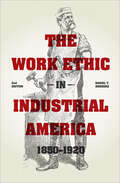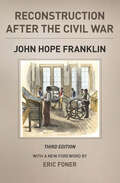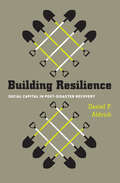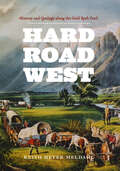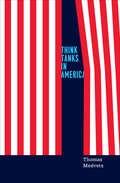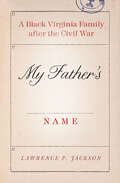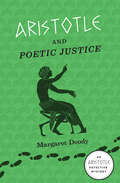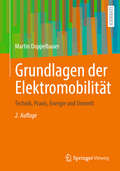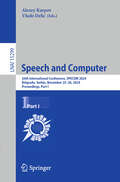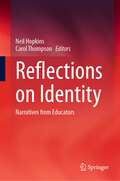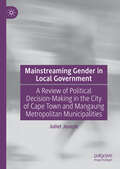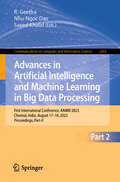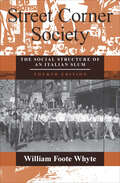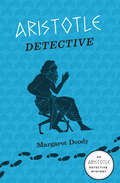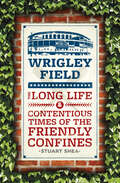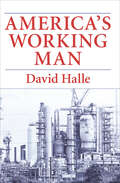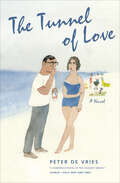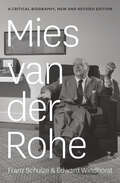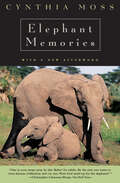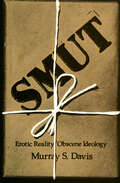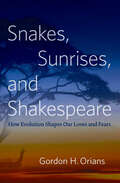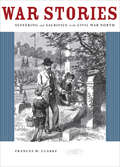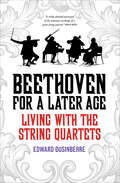- Table View
- List View
The Work Ethic in Industrial America 1850-1920: Second Edition
by Daniel T. RodgersHow the rise of machines changed the way we think about work—and about success. The phrase &“a strong work ethic&” conjures images of hard-driving employees working diligently for long hours. But where did this ideal come from, and how has it been buffeted by changes in work itself? While seemingly rooted in America&’s Puritan heritage, perceptions of work ethic have actually undergone multiple transformations over the centuries. And few eras saw a more radical shift than the American industrial age. Daniel T. Rodgers masterfully explores the ways in which the eclipse of small-scale workshops by mechanized production and mass consumption triggered far-reaching shifts in perceptions of labor, leisure, and personal success. He also shows how the new work culture permeated society, including literature, politics, the emerging feminist movement, and the labor movement. A staple of courses in the history of American labor and industrial society, Rodgers&’s sharp analysis is as relevant as ever as twenty-first-century workers face another shift brought about by technology. The Work Ethic in Industrial America 1850–1920 is a classic with critical relevance in today&’s volatile economic times.
Reconstruction after the Civil War (The Chicago History of American Civilization)
by John Hope FranklinThe classic work of American history by the renowned author of From Slavery to Freedom, with a new introduction by historian Eric Foner. First published in 1961, John Hope Franklin&’s revelatory study of the Reconstruction Era is a landmark work of history, exploring the role of former slaves and dispelling longstanding popular myths about corruption and Radical rule. Looking past dubious scholarship that had previously dominated the narrative, Franklin combines astute insight and careful research to provide an accurate, comprehensive portrait of the era. Franklin&’s arguments concerning the brevity of the North&’s occupation, the limited power wielded by former slaves, the influence of moderate southerners, the flawed constitutions of the radical state governments, and the downfall of Reconstruction remain compelling today. This new edition of Reconstruction after the Civil War also includes a foreword by Eric Foner and a perceptive essay by Michael W. Fitzgerald.
Building Resilience: Social Capital in Post-Disaster Recovery
by Daniel P. AldrichThe factor that makes some communities rebound quickly from disasters while others fall apart: &“A fascinating book on an important topic.&”—E.L. Hirsch, in Choice Each year, natural disasters threaten the strength and stability of communities worldwide. Yet responses to the challenges of recovery vary greatly and in ways that aren&’t explained by the magnitude of the catastrophe or the amount of aid provided by national governments or the international community. The difference between resilience and disrepair, as Daniel P. Aldrich shows, lies in the depth of communities&’ social capital. Building Resilience highlights the critical role of social capital in the ability of a community to withstand disaster and rebuild both the infrastructure and the ties that are at the foundation of any community. Aldrich examines the post-disaster responses of four distinct communities—Tokyo following the 1923 earthquake, Kobe after the 1995 earthquake, Tamil Nadu after the 2004 Indian Ocean Tsunami, and New Orleans post-Katrina—and finds that those with robust social networks were better able to coordinate recovery. In addition to quickly disseminating information and financial and physical assistance, communities with an abundance of social capital were able to minimize the migration of people and valuable resources out of the area. With governments increasingly overstretched and natural disasters likely to increase in frequency and intensity, a thorough understanding of what contributes to efficient reconstruction is more important than ever. Building Resilience underscores a critical component of an effective response.
Hard Road West: History and Geology along the Gold Rush Trail (Chicago Lectures In Physics Ser.)
by Keith Heyer MeldahlThe dramatic journeys of the 19th century Gold Rush come to life in this geologist&’s tour of the American West and the events that shaped the land. In 1848, news of the discovery of gold in California triggered an enormous wave of emigration toward the Pacific. The dramatic terrain these settlers crossed is so familiar to us now that it is hard to imagine how frightening—even godforsaken—its sheer rock faces and barren deserts once seemed to them. Hard Road West brings their perspective vividly to life, weaving together the epic overland journey of the covered wagon trains and the compelling story of the landscape they encountered. Taking readers along the 2,000-mile California Trail, Keith Meldahl uses settler&’s diaries and letters—as well as his own experiences on the trail—to reveal how the geology and geography of the West shaped our nation&’s westward expansion. He guides us through a landscape of sawtooth mountains, following the meager streams that served as lifelines through an arid land, all the way to California itself, where colliding tectonic plates created breathtaking scenery and planted the gold that lured travelers west in the first place. &“Alternates seamlessly between vivid accounts of the 19th-century journey and lucid explanations of the geological events that shaped the landscape traveled.&”—Library Journal
Think Tanks in America
by Thomas MedvetzA revealing look at the rise of these influential institutions, and the effect they&’ve had on the United States. Think tanks have become fixtures of American politics, supplying advice to presidents and policy makers, expert testimony on Capitol Hill, and convenient facts and figures to journalists and media specialists. But what are think tanks? Who funds them? What kind of research do they produce? Where does their authority come from? And how influential have they become? In Think Tanks in America, Thomas Medvetz argues that the unsettling ambiguity of the think tank is less an accidental feature of its existence than the very key to its impact. By combining elements of more established sources of public knowledge—universities, government agencies, businesses, and the media—think tanks exert a tremendous amount of influence on the way citizens and lawmakers perceive the world, unbound by the more clearly defined roles of those other institutions. In the process, they transform the government of this country, the press, and the political role of intellectuals. Timely, succinct, and instructive, this provocative book will force us to rethink our understanding of the drivers of political debate in the United States.
Songbook: How Lyrics Became Poetry in Medieval Europe
by Marisa GalvezHow medieval songbooks were composed in collaboration with the community—and across languages and societies: &“Eloquent…clearly argued.&”—Times Literary Supplement Today we usually think of a book of poems as composed by a poet, rather than assembled or adapted by a network of poets and readers. But the earliest European vernacular poetries challenge these assumptions. Medieval songbooks remind us how lyric poetry was once communally produced and received—a collaboration of artists, performers, live audiences, and readers stretching across languages and societies. The only comparative study of its kind, Songbook treats what poetry was before the emergence of the modern category poetry: that is, how vernacular songbooks of the thirteenth to fifteenth centuries shaped our modern understanding of poetry by establishing expectations of what is a poem, what is a poet, and what is lyric poetry itself. Marisa Galvez analyzes the seminal songbooks representing the vernacular traditions of Occitan, Middle High German, and Castilian, and tracks the process by which the songbook emerged from the original performance contexts of oral publication, into a medium for preservation, and, finally, into an established literary object. Galvez reveals that songbooks—in ways that resonate with our modern practice of curated archives and playlists—contain lyric, music, images, and other nonlyric texts selected and ordered to reflect the local values and preferences of their readers. At a time when medievalists are reassessing the historical foundations of their field and especially the national literary canons established in the nineteenth century, a new examination of the songbook&’s role in several vernacular traditions is more relevant than ever.
My Father's Name: A Black Virginia Family after the Civil War
by Lawrence P. JacksonAn African American studies scholar traces his family lineage to a Black Virginia neighborhood in the era of Reconstruction in this historical memoir. As an expectant father, Lawrence P. Jackson decides to go looking for his late grandfather&’s home in Pittsylvania County, Virginia, an old house by the railroad tracks in Blairs. Armed with nothing but childhood memories, his journey evolves into a kind of detective story as he uncovers his ancestral history through the turmoil and torment of the 19th century South. After asking around in Pittsylvania County, Jackson finds himself in the house of distant relations. He becomes increasingly absorbed by the search for his ancestors and soon realizes how few generations an African American needs to map in order to arrive at slavery, the &“door of no return.&” Ultimately, Jackson&’s dogged research leads him to his grandfather&’s grandfather, a man who was born or sold into slavery but who, when Federal troops abandoned the South in 1877, was able to buy forty acres of land. In this intimate study of a black Virginia family and neighborhood, Jackson vividly reconstructs moments in the lives of his father&’s grandfather, Edward Jackson, and great-grandfather, Granville Hundley, and gives life to revealing narratives of Pittsylvania County, recalling both the horror of slavery and the later struggles of postbellum freedom.
Aristotle and Poetic Justice: An Aristotle Detective Novel (The Aristotle Detective Novels #2)
by Margaret DoodyThe great Greek philosopher heads to Delphi on the hunt for a kidnapped heiress in this series of &“witty, elegant whodunits&” (Times Literary Supplement). 330BC: Alexander the Great has sacked Persepolis and won the greatest fortune the world has ever known. The night of the Silent Dinner, when Athens placates the spirits of the dead, passes with a creeping mist accompanied by eerie portents and a strange disappearance. Stephanos and his teacher, the philosopher Aristotle, are about to be drawn into solving the perplexing abduction case of Anthia, the heiress of a prominent silver merchant. All that is known is that the abductor and the heiress are on the road to Delphi and its ancient oracle—whose help may be needed when a murder complicates the case in this follow-up to the &“eminently enjoyable&” Aristotle Detective (Colin Dexter, author of the Inspector Morse Mysteries). &“Why did no one think of this before?&”—The Times (UK)
Grundlagen der Elektromobilität: Technik, Praxis, Energie und Umwelt
by Martin DoppelbauerAusgehend von den Mobilitätsbedürfnissen der modernen Industriegesellschaft und den politischen Rahmenbedingungen zum Klimaschutz werden die unterschiedlichen Antriebs- und Ladekonzepte von batterieelektrischen- und hybridelektrischen Fahrzeugen vorgestellt und bewertet.
Speech and Computer: 26th International Conference, SPECOM 2024, Belgrade, Serbia, November 25–28, 2024, Proceedings, Part I (Lecture Notes in Computer Science #15299)
by Alexey Karpov Vlado DelićThe two-volume set LNAI 15299 and 15300 constitutes the refereed proceedings of the 26th International Conference on Speech and Computer, SPECOM 2024, held in Belgrade, Serbia, during November 25–28, 2024. The 53 full papers included in these proceedings were carefully reviewed and selected from 90 submissions. The book also contains two invited talks in full paper length. The papers are organized in the following topical sections: Volume I: Invited papers; automatic speech recognition; speech and language resources; speech synthesis and perception; and speech processing for medicine. Volume II: Computational paralinguistics; affective computing; speaker recognition; digital speech processing; natural language processing.
Reflections on Identity: Narratives from Educators
by Carol Thompson Neil HopkinsThis book seeks to extend perspectives on professional identity in education. Chapters consider the notion of expertise, the impact of managerial approaches, the importance of communities of practice, and the effects of increasingly marketised approaches.By using narratives, the book opens up a ‘conversation’ about this important topic. Educators and leaders from a variety of settings will explore their professional experiences and the impact these have had on forming values in the professional role. By drawing on personal experience, individual authors will consider some of the challenges they have encountered as part of identity formation. The significance of organisational cultures is discussed throughout the book and explores the ways in which individual autonomy is both threatened and claimed. Issues discussed include the frequent changes imposed through government initiatives and the social perception of education professionals when compared to other professional roles. Contributions have been drawn from teachers and leaders in schools, colleges, universities and specialist training. Chapter authors have a variety of experiences offering a multi-perspective approach. This will include strategic leadership, operational management and classroom practice, all of which offer insights of interest to educators at various points on the professional journey. The narrative approach adopted by authors provides the opportunity for readers to engage with others’ experiences, enabling personal reflection on their own professional identity.
Mainstreaming Gender in Local Government: A Review of Political Decision-Making in the City of Cape Town and Mangaung Metropolitan Municipalities
by Juliet JosephThis book investigates the implementation of gender mainstreaming legislation and policies in South Africa, focusing on their impact on women’s empowerment in terms of representation, participation, and influence in municipal government. The objective is to understand why women remain underrepresented in leadership roles and decision-making at the district level of municipal governance. Emphasizing how municipal councils incorporate gender mainstreaming into their decision-making processes and the resulting impact, the author focuses on understanding the developments that advance municipal governments toward equitable governance and how decision-making has evolved. This book will be of interest to students and researchers in gender studies, African studies, postcolonial feminist theory, and politics, as well as policy-makers and government representatives.
2000 Years of Pandemics: Past, Present, and Future
by Claudia Ferreira Marie-Françoise J. Doursout Joselito S. BalingitThis book analyzes the factors that have sparked pandemics over the past 2000 years, from the Antonine Plague to COVID-19.It is noteworthy that the frequency of pandemics has increased over the past 2000 years. The authors identify three main drivers for the development of pandemics: transportation, human development, and changes in natural ecosystems. It is important to note that with the advent of the industrial age, the length of time it takes for a pandemic to develop has decreased. COVID-19 is certainly not the last pandemic we will face. Therefore, it is of paramount importance to learn from the past 2000 years to help educate general community and public health officials about pandemic risks and help governments prepare for the next pandemic.The book is also very useful in low and middle-income countries where, in the last several decades, viruses with potential for pandemics have originated. It's comprehensiveness and didactic style make this book a valuable read for government health agencies, private organizations, health care professionals and students.
Advances in Artificial Intelligence and Machine Learning in Big Data Processing: First International Conference, AAIMB 2023, Chennai, India, August 17–18, 2023, Proceedings, Part-II (Communications in Computer and Information Science #2203)
by Nhu-Ngoc Dao R. Geetha Saeed KhalidThis book constitutes the refereed proceedings of the First International Conference on Advances in Artificial Intelligence & Machine Learning in Big Data Processing, AAIMB 2023, held in Chennai, India, during August 17–18, 2023. The 51 full papers presented were carefully reviewed and selected from 183 submissions. They were organized in the following topical sections: Part I- artificial intelligence and data analytics; deep learning. Part II- artificial intelligence and data analytics; machine learning.
Street Corner Society: The Social Structure of an Italian Slum (Materiale Soziologie Ser. #6)
by William Foote WhyteThe classic study of a poor community in Boston&’s North End in the mid-twentieth century. Street Corner Society is one of a handful of works that can justifiably be called classics of sociological research. William Foote Whyte's account of the Italian American slum he called &“Cornerville&”—Boston's North End—has been the model for urban ethnography for fifty years. By mapping the intricate social worlds of street gangs and &“corner boys,&” Whyte was among the first to demonstrate that a poor community need not be socially disorganized. His writing set a standard for vivid portrayals of real people in real situations. And his frank discussion of his methodology—participant observation—has served as an essential casebook in field research for generations of students and scholars. This fiftieth anniversary edition includes a new preface and revisions to the methodological appendix. In a new section on the book&’s legacy, Whyte responds to challenges to the validity, interpretation, and uses of his data. &“The Whyte Impact on the Underdog,&” the moving statement by a gang leader who became the author&’s first research assistant, is preserved. &“Street Corner Society broke new ground and set a standard for field research in American cities that remains a source of intellectual challenge.&”—Robert Washington, Reviews in Anthropology
Aristotle Detective: An Aristotle Detective Novel (The Aristotle Detective Novels #1)
by Margaret DoodyIn ancient Athens, the great philosopher applies logic to a lethal crime—in the &“eminently enjoyable&” first novel in a historical mystery series (Colin Dexter, author of the Inspector Morse Mysteries). Young Stephanos is desperate to save his family&’s honor by proving in the Athenian court that his exiled cousin is not guilty of shooting an arrow into a prominent patrician. For help, he turns to his old teacher—the cunning and clever thinker known as Aristotle. It will all lead up to a tense public trial in which Stephanos must draw on the rhetorical skills he&’s learned from his eccentric, brilliant mentor, in this novel filled with suspense, humor, and historical detail—the first in a series of &“witty, elegant whodunits&” (Times Literary Supplement). &“[An] unusually authentic Ancient-Greece murder tale.&”—Kirkus Reviews &“Doody brings the Athens of 322 BC to life with skill and verve…wonderfully plotted.&”—Publishers Weekly
Wrigley Field: The Long Life and Contentious Times of the Friendly Confines
by Stuart Shea&“One of the best books ever written about the Cubs, their home and the fans who flock there to watch them, win or lose.&”—Rolling Stone In spring 1914, a new ballpark opened in Chicago. Hastily constructed after epic political maneuvering around the city&’s and organized baseball&’s hierarchies, the new Weeghman Park (named after its builder, fast-food magnate Charley Weeghman) was home to the Federal Leagues Chicago Whales. The park would soon be known as Wrigley Field, one of the most emblematic and controversial baseball stadiums in America. In this book, Stuart Shea provides a detailed and colorful chronicle of this living historic landmark and shows how the stadium has evolved to meet the shifting priorities of its owners and changing demands of its fans. While Wrigley Field today seems irreplaceable, we learn that from game one it has been the subject of endless debates over its future, its design, and its place in the neighborhood it calls home. To some, it is a hallowed piece of baseball history; to others, an icon of mismanagement and ineptitude. Shea deftly navigates the highs and lows, breaking through myths and rumors, in a book packed with facts, stories, and surprises that will captivate even the most fair-weather fan. From big money (the Ricketts family paid $900 million for the team and stadium in 2009), to exploding hot dog carts, to the curse-inducing goat, Shea uncovers the heart of the stadium&’s history. &“More than any other American institution, baseball most wholeheartedly welcomes half-baked history and curdled lore. It's fun, after all; what grinch wishes to poke at the tale of Babe Ruth's called shot? But more often than not the real stories are even more delicious, and no one has gathered more of them than author Stuart Shea. His book is an unceasing delight.&”—John Thorn, official historian, Major League Baseball and author of Baseball in the Garden of Eden
America's Working Man: Work, Home, and Politics Among Blue Collar Property Owners
by David Halle&“An unusually deep and wide-ranging study&” by a sociologist who spent years listening to and living among workers at a New Jersey chemical plant (Journal of American Studies). Over a period of six years during the late 1970s, at factory and warehouse, at the tavern across the road, in their homes and union meetings, on fishing trips and social outings, David Halle talked and listened to workers of an automated chemical plant in New Jersey&’s industrial heartland—white, male, and mostly Catholic. He has emerged with an unusually comprehensive and convincingly realistic picture of blue-collar life in America during this era. Throughout the book, Halle illustrates his analysis with excerpts of workers&’ views on everything from strikes, class consciousness, politics, job security, and toxic chemicals to marriage, betting on horses, God, home-ownership, drinking, adultery, the Super Bowl, and life after death. Halle challenges the stereotypes of the blue-collar mentality and provides a detailed, in-depth portrait of one community of workers at a time when it was relatively affluent and secure. &“Absorbing reading.&”—Business Week
The Tunnel of Love: A Novel
by Peter De VriesA comic novel of ambition and infidelity in the suburbs by &“the funniest serious writer to be found either side of the Atlantic&” (Kinglsey Amis). Harking from the golden age of fiction that skewered the middle-class American dream—the school of John Updike and John Cheever—this novel by the author of Slouching Towards Kalamazoo looks with laughter upon the lawns, cocktails, and creature comforts of suburbia, as well as the antics and anxieties that lurk just beneath its manicured facade. De Vries&’s classic situation comedy The Tunnel of Love follows the interactions of a socially insecure, pun-loving family man, an officious lady caseworker from an adoption agency, and a chauvinist pig—all of whom are neighbors who know far too much about one another&’s private lives. In this farcical tale of marital quibbles, De Vries employs his verbal fluidity and singular gift for wordplay to offer readers &“his Scarlet Letter, in which adultery leads not to a consciousness of sin and repentance but to a neurotic guilt and the delicious enjoyment it affords&” (D.G. Myers, from the introduction).
Mies van der Rohe: A Critical Biography, New and Revised Edition (Illustrated Catalog Of The Mies Van Der Rohe Drawing In The Museum Of Modern Art Ser. #Pt. Ii, 1938-1967, The American Work)
by Franz Schulze Edward WindhorstAn &“excellent&” new edition of the definitive biography of the architectural genius, with more than a hundred photos (Booklist, starred review). Upon publication, this book was praised by the Chicago Tribune and &“the most comprehensive book ever written about the master designer and, by any measure, the best,&” while the Christian Science Monitor noted that &“Schulze has both the gift of an architectural historian able to render Mies&’s building innovations and that of a biographer able to paint the humanity and shortcomings of the man.&” Newsweek called it &“a revelation.&” Now, this biography of the iconic modernist architect and designer has been extensively updated, providing an even more enlightening and intimate portrait of a man who helped to create the twentieth century world. &“This excellent revised edition…has 138 illustrations, incisive descriptions of Mies&’ innovative creations and a fascinating account of his Pyrrhic victory in a lawsuit against his disaffected client Edith Farnsworth.&”—Booklist (starred review) &“This authoritative biography of Mies van der Rohe has been updated through building records, the recollections of students and a court transcript. It's a gripping read.&”—Christopher Woodward, Building Design
Elephant Memories: Thirteen Years in the Life of an Elephant Family
by Cynthia Moss&“A style so conversational…that I felt like a privileged visitor riding beside her in her rickety Land-Rover as she showed me around the park." —The New York Times Book Review Cynthia Moss spent many years living in Kenya&’s Amboseli National Park and studying the elephants there, and her long-term research has revealed much of what we now know about these complex and intelligent animals. In this book, she shares a more up-close and personal perspective, chronicling the lives of the elephant families led by matriarchs Teresia, Slit Ear, Torn Ear, Tania, and Tuskless, including a rare look at calves and their development. This edition is also updated with a new afterword, catching up on the families, covering current conservation issues, and &“celebrating a species from which we could learn some moral as well as zoological lessons&” (Chicago Tribune). &“One is soon swept away by this &‘Babar&’ for adults. By the end, one even begins to feel an aversion for people. One wants to curse human civilization and cry out, &‘Now God stand up for the elephants!&’&”—The New York Times &“Moss speaks to the general reader, with charm as well as scientific authority…[An] elegantly written and ingeniously structured account.&”—TheWall Street Journal &“Any reader interested in animals will be captivated.&”—Publishers Weekly
Smut: Erotic Reality/Obscene Ideology
by Murray S. DavisThis unique study of sexuality and society offers a provocative reframing of the subject—including what the author calls a periodic table of perversions. In Smut, Murray S. Davis investigates sex in a way that differs from nearly all previous books on the subject. Discarding the simplistic theory of sex as a natural instinct, he sets out to develop new explanations for its universal appeal. Drawing on a wide variety of literary forms, including the work of novelists, poets, and even comedians—and exploring everything from theology to pornography—Davis recaptures sex for the social sciences. First, Davis examines the difference between sexual arousal and ordinary experience, arguing that arousal alters a person's experience of the world. Positing an erotic reality distinct from everyday life, he demonstrates how different perceptions of time, space, human bodies, and other social types occur in each realm. Davis then asks why some people find this alternation between realities dirty, and offers a periodic table of perversions that summarizes the social elements out of which those who find sex dirty construct their world. Finally, Davis considers other conceptual grids affected by the alternation between everyday and erotic realities: the pornographic, which portrays individual, social relations, and social organizations being disrupted by sex; and the naturalistic, which conceives of them in a way that cannot be disrupted by sex. Throughout history these ideologies have battled for control over Western society, and, in his conclusion, Davis offers a prognosis for the future of sex based on these historical ideological cycles.
Snakes, Sunrises, and Shakespeare: How Evolution Shapes Our Loves and Fears
by Gordon H. OriansThe eminent zoologist &“extends his pioneering work in evolutionary biology&” to examine &“our preferences, predilections, fears, hopes, and aspirations&” (Stephen R. Kellert, author of Birthright). Why do we jump in fear at the sight of a snake and marvel at the beauty of a sunrise? These impulsive reactions are no accident; in fact, many of our human responses to nature are steeped in our evolutionary past—we fear snakes because of the danger of venom, and we welcome the assurances of sun as the predatory dangers of night disappear. According to evolutionary biologist Gordon Orians, many of our aesthetic preferences—from the kinds of gardens we build to the foods we enjoy and the entertainment we seek—are the lingering result of natural selection. In Snakes, Sunrises, and Shakespeare, Orians explores the role of evolution in human responses to the environment, applying biological perspectives ranging from Darwin to current neuroscience. Orians reveals how our emotional lives today are shaped by decisions our ancestors made centuries ago on African savannas as they selected places to live, sought food and safety, and socialized in small hunter-gatherer groups. During this time our likes and dislikes became wired in our brains, as the appropriate responses to the environment meant the difference between survival or death. His rich analysis explains why we mimic the tropical savannas of our ancestors in our parks and gardens, why we are simultaneously attracted to and repelled by danger, and how paying close attention to nature&’s sounds has made us an unusually musical species.
War Stories: Suffering and Sacrifice in the Civil War North
by Frances M. ClarkeThis &“layered, nuanced, and focused study&” of Civil War era writings reveals a popular sense of patriotism and hope in the midst of loss (Journal of American History). The American Civil War is often seen as the first modern war, not least because of the immense suffering it inflicted. Yet unlike later conflicts, it did not produce an outpouring of disillusionment or cynicism in public or private discourse. In fact, most people portrayed the war in highly sentimental and patriotic terms. While scholars typically dismiss this everyday writing as simplistic or naïve, Frances M. Clarke argues that we need to reconsider the letters, diaries, songs, and journalism penned by Union soldiers and their caregivers to fully understand the war&’s impact and meaning. In War Stories, Clarke revisits the most common stories that average Northerners told in hopes of redeeming their suffering and hardship—stories that enabled people to express their beliefs about religion, community, and personal character. From tales of Union soldiers who died heroically to stories of tireless volunteers who exemplified the Republic&’s virtues, War Stories sheds new light on this transitional moment in the history of war, emotional culture, and American civic life.
Beethoven for a Later Age: Living with the String Quartets
by Edward Dusinberre&“A richly detailed portrayal of the intimate workings of a great string quartet . . . as revealed to us through the recollections of its first violinist.&”—Philip Roth Edward Dusinberre, first violinist of the renowned Takács Quartet, offers a rare peek inside the workings of his ensemble, while providing an insightful history of Beethoven&’s sixteen string quartets and their performance. Founded in Hungary in 1975 and now based in Boulder, Colorado, the Takács is one of the world&’s preeminent string quartets, and performances of Beethoven have been at the center of their work together for over forty years. Using the history of both the Takács Quartet and the Beethoven quartets as a foundation, Beethoven for a Later Age provides a backstage look at the daily life of a quartet, showing the necessary creative tension between individual and group and how four people can at the same time forge a lasting artistic connection and enjoy making music together over decades. In an accessible style, suitable for novices and chamber music enthusiasts alike, Dusinberre illuminates the variety and contradictions of Beethoven&’s quartets, which were composed against the turbulent backdrop of the Napoleonic Wars and their aftermath, and he brings the technical aspects of the music to life. &“We are given intimate insight into the almost impossible-to-describe musical process of rehearsal and performance, the artistic and human interaction that links these modern musicians with their forebears and Beethoven himself.&”—Garrick Ohlsson, pianist &“This singular memoir . . . will be something between informative and revelatory to readers from musicians to music lovers.&”—Jan Swafford, author of Beethoven: Anguish and Triumph
